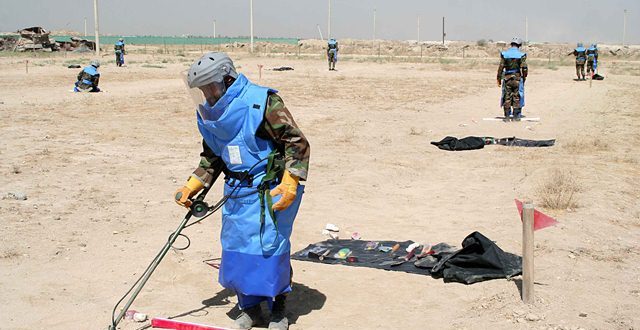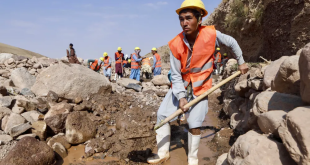KABUL – Afghanistan remains one of the most heavily mined countries in the world, with land mines and unexploded ordnance causing devastating injuries and deaths daily. Decades of conflict have left large swaths of the country contaminated with millions of hidden explosives, posing a constant threat to civilians. The victims, many of whom suffer life-altering injuries, often face significant challenges accessing basic services such as education, employment, and healthcare, leaving them marginalized and dependent on aid.
Since 1989, demining organizations have worked tirelessly to clear over 3,000 square kilometers of contaminated land and disarm more than 14 million pieces of unexploded ordnance. Despite this progress, over 1,200 square kilometers remain hazardous, endangering 1,700 communities across the country. The United Nations Mine Action Service (UNMAS) warns that the danger persists on a massive scale, with mines and unexploded ordnance continuing to claim lives and cause injuries, particularly among vulnerable groups like children and women.
However, demining efforts are under severe threat as funding for humanitarian operations in Afghanistan declines. The Mine Detection Center (MDC), a leading Afghan demining organization, reports that nearly 80 percent of its operations have been halted in the past year due to a lack of resources. This funding shortfall has already led to an increase in casualties, with an average of 60 mine-related injuries and deaths reported monthly, up from 50 in previous years.
The situation is compounded by the return of millions of Afghan refugees from neighboring countries, many of whom are resettling in areas still contaminated with explosive remnants of war. As displaced families and returnees move back to their homes, they face an elevated risk of encountering land mines, further escalating the humanitarian crisis.
International aid has been a lifeline for Afghanistan’s demining operations, but recent political shifts have jeopardized this support. The United States, historically the largest donor, has signaled a potential reduction in funding, raising fears that progress made over the past three decades could be undone.
Without immediate action and renewed commitment from the global community, the number of land mine victims is expected to rise significantly. The challenge of clearing Afghanistan’s deadly legacy remains urgent, requiring sustained resources and international cooperation to prevent further loss of life and suffering.
 Afghanistan Times
Afghanistan Times




